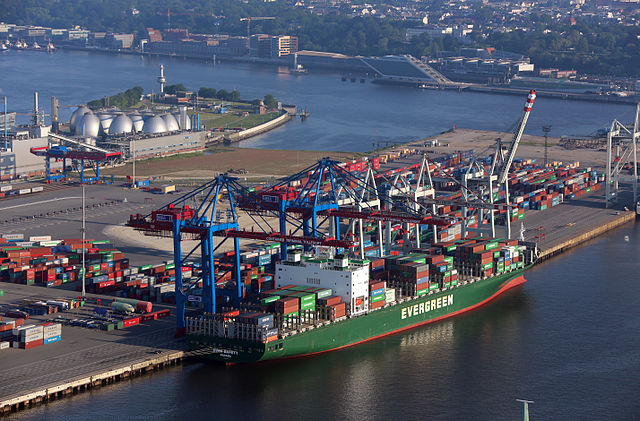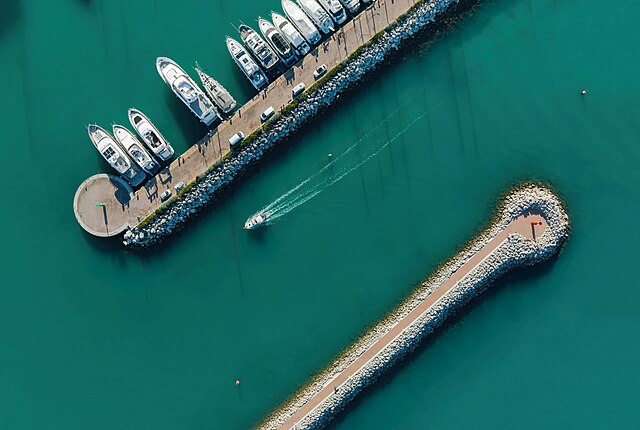A port is a maritime facility comprising one or more wharves or loading areas, where ships load and discharge cargo and passengers. Although usually situated on a sea coast or estuary, ports can also be found far inland, such as Hamburg, Manchester and Duluth; these access the sea via rivers or canals. Because of their roles as ports of entry for immigrants as well as soldiers in wartime, many port cities have experienced dramatic multi-ethnic and multicultural changes throughout their histories.
The Port of New York and New Jersey grew from the original harbor at the convergence of the Hudson River and the East River at the Upper New York Bay.
An Evergreen ship loading at Container Terminal Altenwerder, port of Hamburg, Germany
Izola Marina, Slovenia
A ship pumping bilge water into a harbor
A wharf, quay, staith, or staithe is a structure on the shore of a harbour or on the bank of a river or canal where ships may dock to load and unload cargo or passengers. Such a structure includes one or more berths, and may also include piers, warehouses, or other facilities necessary for handling the ships. Wharves are often considered to be a series of docks at which boats are stationed. A marginal wharf is connected to the shore along its full length.
The Barbours Cut Terminal of the Port of Houston, US. This cargo shipping terminal has a single large wharf with multiple berths.
Wharf under construction on the Upper Mississippi in Fountain City, Wisconsin
Quay in Dublin, Ireland. The Irish language term cé is a borrowing from Anglo-Norman kay, cail.
Stereoscopic view of Long Wharf in Boston, United States, c. 19th century, jutting into Boston Harbor








